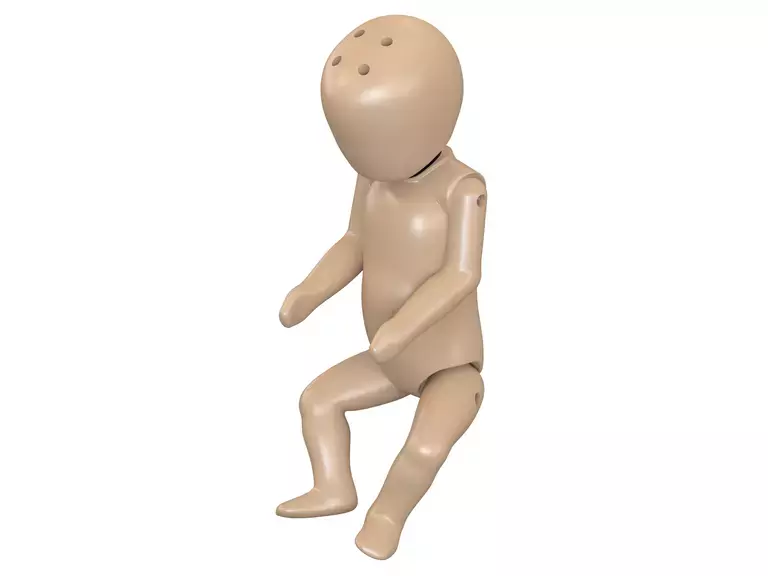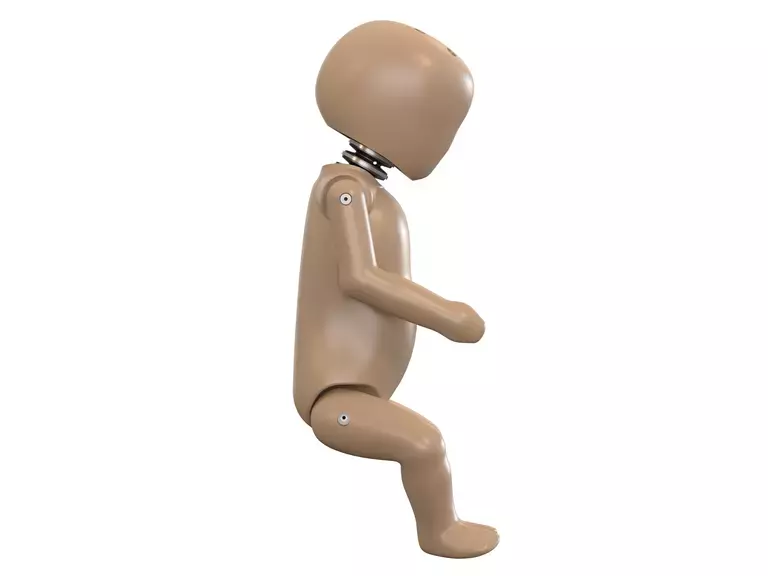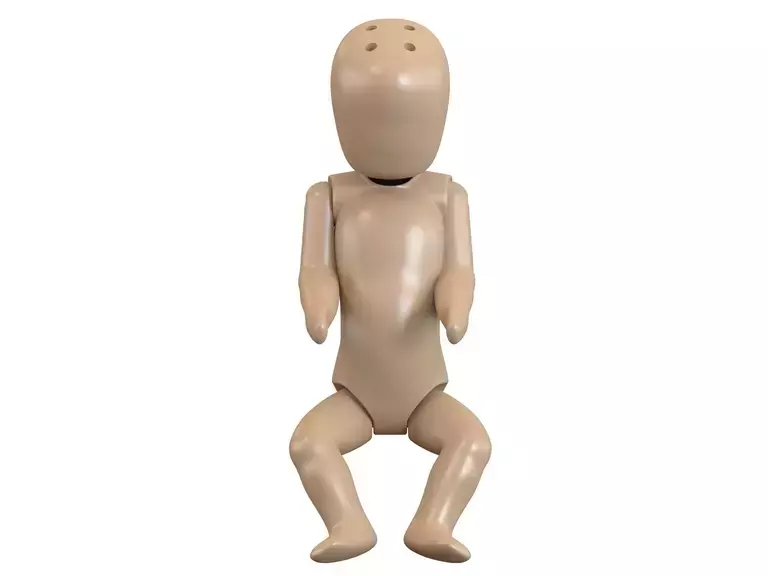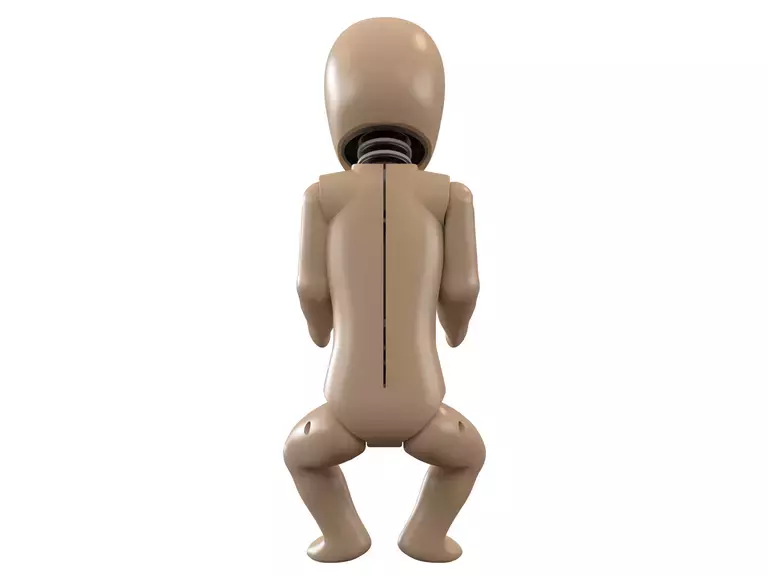




Q-Series Q0 Dummy
- Standard Q0 ATD 047-0000
In the early 1990s, statistics showed that there was much room for improvement in the design of child restraint systems (CRS) in vehicles. The existing P-Series of child dummies used for testing CRS had a simple design and were limited in their measurement capability.
Our Q-Series of child dummies were developed in 1993 as successors to the P-Series in the hopes of giving engineers the information they needed to design greater impact protection for children in cars. This new generation of dummies has much better anthropometry, biomechanics and kinematics, all key to better evaluating the risk of injury to varying ages and sizes of child passengers. The Q-Series can be used in frontal or side impact testing, and the instrumentation is interchangeable within the dummy series.
The Q0 child dummy represents a six-week old infant. The mass in inertia are based on the anthropomorphic data collection called CANDAT (Child Anthropometry Data) and is designed as a tool to evaluate the protection offered to newborn children by appropriate child restraints used in cars.
Specifications
Key Features
- Rigid plastic skull with accelerometer cavity, soft durable head skin with biofidelic response.
- Neck consists of rubber segments between metal plates to allow realistic flexion, extension and lateral flexion rotational behavior.
- Shoulder incorporates a ball and socket joint to simulate the humerus-scapula joint with a scapula distributing load at the back.
- Frictional adjustment included for positioning the arms.
- Sit-stand designs, anatomically shaped bony parts from anatomical data and child X-rays.
Product Specifications
| Sitting Height | 355 mm | 14 in |
| Stature | 597 mm | 23.5 in |
| Shoulder Height | 255 mm | 10 in |
| Shoulder Width | 145 mm | 5.7 in |
| Shoulder Top to Elbow | 100 mm | 3.9 in |
| Elbow to Hand | 127 mm | 5 in |
| Buttock to Knee | 130 mm | 5.1 in |
| Knee to Foot | 112 mm | 4.4 in |
| Total Weight | 3.47 kg | 7.7 lb |
Applications
- Vehicular front and side impact testing.
Regulations
| WHERE USED | DEFINING REGULATION |
|---|---|
| ANCAP | E/ECE/324/Rev.2/Add.128 E/ECE/TRANS/505/Rev.2/Add. 128 Annex 8. UN R129 |
| ASEAN NCAP | E/ECE/324/Rev.2/Add.128 E/ECE/TRANS/505/Rev.2/Add. 128 Annex 8. UN R129 |
| C-NCAP | E/ECE/324/Rev.2/Add.128 E/ECE/TRANS/505/Rev.2/Add. 128 Annex 8. UN R129 |
| Euro NCAP | E/ECE/324/Rev.2/Add.128 E/ECE/TRANS/505/Rev.2/Add. 128 Annex 8. UN R129 |
| KNCAP | E/ECE/324/Rev.2/Add.128 E/ECE/TRANS/505/Rev.2/Add. 128 Annex 8. UN R129 |
| Latin NCAP | E/ECE/324/Rev.2/Add.128 E/ECE/TRANS/505/Rev.2/Add. 128 Annex 8. UN R129 |
| UN R129 | E/ECE/324/Rev.2/Add.128 E/ECE/TRANS/505/Rev.2/Add. 128 Annex 8. UN R129 |
Instrumentation
| Linear Accels | Load Cells |
|---|---|
| Head, Thorax, Pelvis-Axyz | Neck Upper Fxyz, Mxyz |